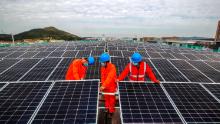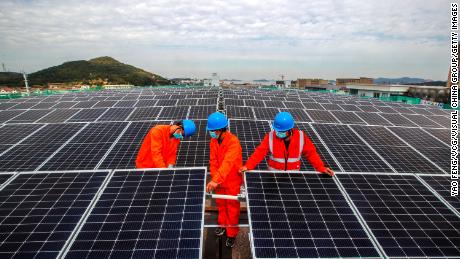The current pace is being driven by China, which the agency says remains the global leader in renewable energy growth. The country is expected to reach 1200 GW of total wind and solar capacity in 2026, four years sooner than its target date.
Renewables are also being rapidly embraced in India, where they are projected to double new installations this year, in comparison to 2015-2020.
The IEA also pointed to deployments in Europe and the United States, regions that are both expected to speed up renewable installations “significantly” from the previous five years.
China, India, Europe and the United States together account for 80% or global renewable capacity expansion, it said. But their current efforts alone aren’t going to solve the climate crisis.
To achieve net-zero emissions by 2050 — where the world is emitting only as much greenhouse gas as it can also remove from the atmosphere — renewable power capacity additions need to almost double in rate from 2021 to 2026, the IEA said. For biofuels, annual demand growth needs to quadruple and renewable heat demand needs to triple.
Whether global leaders are up to the task is still a question, with pledges at this month’s climate talks in Glasgow, Scotland falling short of what scientists say is needed to avoid the worst consequences of the climate crisis. Nearly 200 countries adopted the Glasgow Climate Pact at COP26 in early November, an agreement that called for the phasing down of unabated coal and inefficient fossil fuel subsidies.
India and Iran said no to including tough language about fossil fuels in the Glasgow pact. India, whose government recently committed to reaching 500 GW of renewable power capacity by 2030, requested a change to the text to read a phasing “down” of coal as opposed to a phasing “out.”
Coal is the dirtiest form of energy and scientists say phasing out the use of coal is key to tackling the climate crisis.
In its report, the IEA says governments need to ramp up renewables by addressing key barriers to their implementation, including grid integration, insufficient remuneration, social acceptance issues and inconsistent policy approaches.




